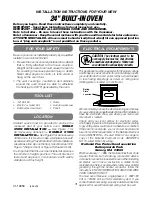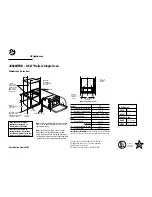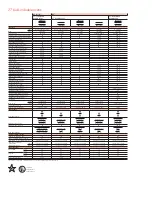
en
How it works
92
Tips for steaming food using the steam
container
¡
In contrast to cooking with added steam, the stea-
ming function cooks the meat particularly gently but
it does not become crispy on the outside. It remains
very succulent.
¡
You can also sear pieces of meat before steaming,
which will reduce their cooking time and give them
a slightly different flavour. Larger pieces require a
longer cooking time. Pieces of meat do not need to
be turned.
¡
To steam poultry, meat or fish, place the item to be
cooked on the steam container in the glass tray and
then place this in the cooking compartment at shelf
position 3.
¡
Fill the water tank up to the "MAX" mark. If the water
tank runs dry during operation, the operation will be
paused. You will be alerted to this by a message on
the display.
Grilling tips
¡
Keep the appliance door closed when using the
grill. Never grill with the appliance door open.
¡
Place the food to be grilled directly on the wire rack.
Place the glass dish underneath the wire rack as
well. Any dripping fat will be caught.
¡
Try to use pieces of food of a similar thickness and
weight. This will allow them to brown evenly and re-
main succulent and juicy.
¡
Use tongs to turn the pieces of food you are grilling.
If you pierce the meat with a fork, the juices will run
out and it will become dry.
¡
Do not add salt to the meat until it has been grilled.
Salt draws water from the meat.
Note:
The grill elements continuously switch on and off;
this is normal. The grill setting determines how fre-
quently this occurs.
Smoke may be produced when grilling.
Recommended setting values
¡
The setting values are based on the assumption that
unstuffed, chilled, ready-to-roast poultry, meat or fish
is placed into a cold cooking compartment.
¡
The table lists values for poultry, meat and fish, with
default values for the weight. If you want to cook
heavier poultry, meat or fish, always use the lower
temperature. If cooking more than one item, use the
weight of the heaviest item as a basis for determi-
ning the cooking time. The individual pieces should
be approximately the same size.
¡
Try to use pieces of food of a similar thickness and
weight. This will allow them to brown evenly and re-
main succulent and juicy.
¡
The larger the poultry, meat or fish, the lower the
cooking temperature and the longer the cooking ti-
me.
¡
Turn poultry, meat and fish if specified in the set-
tings table.
Tips for cooking poultry
¡
For duck or goose, pierce the skin on the underside
of the wings. This allows the fat to drain out.
¡
If using duck breast, score the skin.
¡
Do not turn duck breasts.
¡
When you turn poultry, ensure that the breast side
or the skin side is underneath at first.
Tips for cooking meat
¡
Coat lean meat with fat or oil as required and cover
it with strips of bacon.
¡
When roasting, add a little liquid if the meat is lean.
This liquid should just about cover the bottom of the
glass cookware.
¡
Score the rind crosswise.
¡
When the joint is ready, turn off the oven and allow
it to rest for a further 10 minutes in the cooking
compartment, keeping the door closed. This helps
distribute the meat juices more evenly. Wrap the
joint in aluminium foil. The recommended resting ti-
me is not included in the cooking times specified.
¡
It is more convenient to roast and braise meat in the
cookware. You can take the joint out of the cooking
compartment more easily in the cookware, and pre-
pare the sauce in the cookware itself.
¡
The quantity of liquid depends on the type of meat,
the material the cookware is made from and on
whether or not a lid is used. If you are cooking meat
in an enamelled or dark-coloured metal roasting
dish, it will need a little more liquid than if cooked in
glass cookware.
¡
The liquid in the cookware evaporates as the meat
roasts. Carefully pour in more liquid if required.
¡
The gap between the meat and the lid must be at
least 3 cm. The meat may expand.
¡
To braise the meat, sear it first as required. Add wa-
ter, wine, vinegar or a similar liquid for the braising
liquid. The base of the cookware must be covered
with 1-2 cm of liquid.
Tips for cooking fish
¡
You do not need to turn a whole fish.
¡
If you would like to cook fish on the wire rack, coat
the wire rack with a little oil beforehand as this will
make it easier to remove the fish later.
¡
You can tell when the fish is cooked because the
dorsal fin can be removed easily.
















































